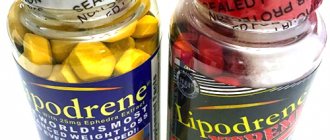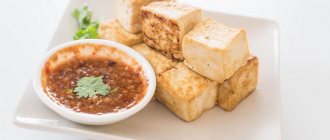Share:
Buckwheat is not subject to genetic modification. It contains dozens of useful microelements and vitamins; it does not belong to the category of cereals, but is much more nutritious than other grains. Thanks to these and many other properties, buckwheat takes first place in consumption in Russia, India, Japan, Israel and other countries. What are the benefits of buckwheat for our body and what will happen if we eat buckwheat porridge every day? You will find answers to these and other questions in our article.
Composition of buckwheat, glycemic index, BJU ratio, nutritional value
Buckwheat contains saturated and unsaturated amino acids and acids, carbohydrates, fats, proteins, vitamins, poly- and monosaccharides, and minerals.
Vitamin and mineral composition of cereals:
- 55% starch;
- 0.6% saturated fatty acids;
- 2.3% fatty unsaturated amino acids
- 1,4 mono- and disaccharides.
Buckwheat kernels or whole buckwheat grains, peeled from the husk, are most beneficial for the body. The lighter its grains in the package, the richer its composition. In addition to kernels, supermarkets sell buckwheat or chaff, that is, buckwheat grains crushed into 2-3 parts. The next product in the fraction is buckwheat flakes, and the final crushing product is buckwheat flour. The champion in terms of beneficial qualities is green buckwheat. It is consumed in sprouted form, adding to fresh vegetable salads. Green buckwheat is not used for porridges and soups.
When buying buckwheat in the store, choose not steamed or fried, but simply peeled grains.
Table of the content of vitamins and minerals as a percentage of their daily intake.
| Name | The amount of nutrients in 100 grams of buckwheat, their % of the daily value |
| Vitamins | |
| IN 1 | 20% |
| AT 2 | 7,8% |
| AT 6 | 17% |
| AT 9 | 7% |
| RR | 31% |
| Minerals | |
| Potassium | 13% |
| Magnesium | 64% |
| Copper | 66% |
| Manganese | 88% |
| Phosphorus | 42% |
| Iron | 46% |
| Zinc | 23% |
| Cellulose | 70% |
The table of vitamins and minerals can be downloaded here.
In addition to the minerals indicated in the table, buckwheat contains small amounts of molybdenum, chlorine, sulfur, silicon, boron, and calcium. Buckwheat is a source of oxalic, malic and citric acid, folic acid, as well as lysine and arginine.
The high carbohydrate content (58.2 g) ensures quick saturation with the product. In terms of protein content (13 g), buckwheat is comparable to meat, but the former “wins” due to its low fat content (3.6 g).
The calorie content of buckwheat is 308 kcal per 100 grams. Despite the high calorie content, all substances included in the cereal are completely absorbed by the body. The calorie content of buckwheat in water is three times lower - 103.3 kcal.
The glycemic index of buckwheat is 60. Buckwheat porridge cooked in water has a GI of 50.
Calorie content of buckwheat porridge
The nutritional value and calorie content of buckwheat porridge depends on the additional products used in preparation, as well as on the method and duration of heat treatment. The minimum amount of calories is in porridge steamed overnight with boiling water. 100 g of product will contain no more than 105 kcal. Nutritionists recommend eating this porridge for breakfast during diets, fasting days, and for regular cleansing of the body.
With butter
The calorie content of buckwheat porridge with water and butter will be higher - about 132 kcal. BJU portions:
- proteins - 4.5 g;
- fats - 2.3 g;
- carbohydrates - 25 g.
It’s easy to prepare porridge with butter: boil 100 g of kernels in 200 ml of salted water, and add a small piece of butter when serving.
On water without salt
The calorie content of boiled buckwheat in water without salt is 134.1 kcal. 100 g of ready-made porridge contains:
- proteins - 5.4 g;
- fats - 1.4 g;
- carbohydrates - 26.6 g.
To prepare, the kernel (100 g) is washed well and poured into boiling water (200 ml). Cook with constant stirring for about 7 minutes, then remove from heat, cover with a lid and wrap in a warm blanket. It takes 15-20 minutes for the porridge to arrive warm. Boiled buckwheat without oil and salt can become not only a healthy breakfast, but also the basis for cutlets, casseroles, pancakes, and biscuits.
With milk
Milk buckwheat porridge has 118 kcal per 100 g of product. Depending on the fat content of the milk used, the kilocalories may be slightly more or less.
To prepare tasty and healthy buckwheat milk porridge, you need to pour a glass of egg kernels into boiling water (glass), reduce the heat and cook for about 7 minutes. Then pour in a glass of milk, stir and cover the bowl with a lid. Cook the porridge over low heat for another 10 minutes. Salt, vanillin, honey, spices or sugar are added a few minutes before readiness. And before serving, wrap the bowl with buckwheat in a towel and leave it warm for another 20-30 minutes.
What is better to cook with buckwheat?
The most popular way to consume buckwheat is porridge with water. The washed grains are simmered over low heat until the grains are cooked and double in size, having absorbed all the water. This buckwheat dish is twice as healthy as milk porridge. Buckwheat itself is a complex carbohydrate, which takes some time for the stomach to process. Processing milk requires more stomach enzymes. “Combining” in one dish, they overload the stomach, but at the same time they release few useful substances.
The optimal combination is kernel porridge and vegetables. Both components are rich in fiber and coarse fiber, which has a positive effect on intestinal motility.
The healthiest way to consume buckwheat is through sprouted green grains. They are not subjected to heat treatment, therefore they give the body a maximum of vitamins, minerals, micro- and macroelements. The taste of sprouted grains is pleasant with nutty notes.
Calorie content of additional ingredients: butter, sugar
Oil is often added to porridges, as it can be used to emphasize the taste of the dish. In addition, oil is beneficial for our body, because a high-quality product contains a large number of useful elements. But, alas, this component should be kept to a minimum if you want to achieve ideal forms. After all, the calorie content in 100 grams of the product is more than seven hundred.
This leads to an easy arithmetic problem. On average, five to ten grams of oil is enough for one serving of buckwheat porridge. And, accordingly, this component increases the calorie content of the dish itself by approximately 35 - 70 kilocalories, which is practically equal to the calorie content of boiled porridge.
The situation is approximately the same with sugar. But the benefits of sugar are not so great for the body, so at the time of diet or cleansing it is better to completely abandon this ingredient . After all, 100 grams of sugar contains about 387 kilocalories.
How many calories are in buckwheat depends on what type of product you prefer and how you prepare it. Of course, if we are talking about a strict diet, where you need to lose a lot of weight at once, then give preference to cereals with water, without adding butter or milk. If the goal is to lose weight smoothly and improve the health of the body, then feel free to fantasize and prepare culinary masterpieces based on kernels. Experiment, but remember, each ingredient added to a dish also has its own calorie content!
The benefits of buckwheat
Buckwheat has a lot of useful qualities. It is suitable for feeding children and adults of any age. Due to its richness in nutrients and easy digestibility, buckwheat is considered a dietary food product.
Beneficial properties of buckwheat:
- Normalizes metabolic processes in the body.
- Seals vascular membranes, prevents thrombosis and stagnation in the blood circulation.
- Used in the treatment of anemia (iron deficiency), stabilizes the amount of hemoglobin in the blood.
- Supports the heart muscle, normalizes the functioning of the central nervous system.
- Stimulates brain neurons, improves memory, visual acuity, and increases the speed of thinking.
- Stimulates metabolism.
- Normalizes intestinal function (the best prevention of diarrhea and constipation).
- Removes toxins and cleanses the body.
In dietary nutrition
The high content of dietary fiber, carbohydrates, antioxidants and amino acids helps cleanse the body and lose weight. To lose weight, strict and non-rigid diets are practiced. The strict buckwheat diet for 14 days is based on boiled buckwheat, water and kefir. You need to drink 1 liter of kefir and 2 liters of water per day.
A gentle diet option: buckwheat, dried fruits, cottage cheese, fresh juices, honey, candied fruits. At the same time, you need to give up salt, flour, alcohol, and sweets. Supplement this diet with fresh vegetables, herbs, and fruits. Make sure that your last meal is no later than 3.5 hours before bedtime.
The benefits and harms of buckwheat
Why is buckwheat so useful? This cereal has a wide range of positive properties for the human body:
- acts as a natural antioxidant;
- strengthens blood vessels;
- cleanses the body;
- improves heart function;
- removes toxins from the gastrointestinal tract;
- normalizes the functioning of the nervous system;
- relieves anxiety;
- reduces cholesterol levels;
- eliminates depression.
This product also has a beneficial effect on the liver, relieving the load on it. Buckwheat adds stamina, restores physical strength, strengthens the immune system, and regulates blood sugar levels. Buckwheat is also an important source of amino acids and protein. It is often included in the diet for anemia and, if necessary, to support the body’s protective resources.
Photo source: shutterstock.com
Daily intake of buckwheat
Not only the benefits, but also the harm of this food is largely determined by the amount of product consumed. It is important to remember: the daily requirement for buckwheat is only 200 grams. It is recommended to include the daily norm in the menu in the morning to recharge your batteries.
General recommendations for following a buckwheat diet
The optimal duration of a buckwheat diet is two weeks. For a mono-diet (only one buckwheat + water) 3 days. During the diet, leave physical training. Try to be outdoors more.
For men
The specific value of buckwheat for the male body is the presence of folic acid. It has a beneficial effect on the functioning of the reproductive and urinary systems, preventing the development of dysfunctions and diseases in this area.
Regular consumption of buckwheat improves sperm quality, increases sperm motility and number. For men who regularly go to the gym or do heavy physical work, buckwheat is a source of energy and a means of muscle recovery.
For women
Regular consumption of buckwheat has a beneficial effect on the condition of the skin. The skin becomes smooth, without hyperpigmentation, shallow expression wrinkles, or sagging. Buckwheat eases eczema, dermatitis, relieves comedones and rashes. For medicinal purposes, buckwheat porridge is used not only for food, but also as face masks.
Folic acid contained in buckwheat helps improve the functioning of the female reproductive system. It is especially useful in the first trimester of pregnancy, as it promotes the development of the fetal nervous system and its proper formation. Also, during pregnancy, buckwheat helps maintain normal hemoglobin levels in the blood.
Buckwheat is also noted to be beneficial for the condition of hair and nails. Curls become softer and more manageable, and nails are strengthened due to the large number of macroelements contained in this cereal.
The calorie content of boiled buckwheat and its beneficial properties have made it the number one product in baby food. This is one of the components of complementary feeding for babies, due to its high iron content and hypoallergenicity, as well as compatibility with other types of products. Buckwheat forms the baby’s immunity and has a positive effect on mental development.
Calorie content of buckwheat in 100 grams
Buckwheat is a low-calorie product with a high protein content. But it is worth understanding that the calorie content of a dish is influenced by the form in which the product is provided. At the moment there is a huge variety of buckwheat products. So, you can find on supermarket shelves both the usual kernels and flakes, green buckwheat, buckwheat chaff, crispbread and much more. The calorie content of your meal will depend on which products you choose.
It is important to note that the most useful are the familiar kernels. They undergo minimal processing, so they retain and contain a maximum of beneficial properties and vitamins.
Steaming flakes are an excellent option for a quick snack, but you shouldn’t get carried away with them. During processing, such products lose a large percentage of useful elements.
Buckwheat "Arivera"
Green buckwheat is a relatively new product on the market and it is not available in every store and supermarket. But it’s worth the effort to find it if you want not only to get rid of excess weight, but also to improve the functioning of the stomach and the body as a whole. It contains a huge amount of PP, which have a beneficial effect on the circulatory system. Porridges prepared with this buckwheat do not irritate the walls of the stomach, do not cause heaviness and bloating, and take a long time to digest, which will give you a feeling of fullness for a long time.
So, which of the above has more calories?
Buckwheat flakes
Buckwheat flakes for quick cooking (steaming) are considered to be the most calorie-rich. 100 grams of this dry express snack contains about three hundred and thirty calories. While the usual and common type - kernels, contain fifteen calories less. That is, about 315 - 313 calories.
Green buckwheat is considered the lowest in calories, so it is recommended for those who really want to get rid of extra pounds quickly and effectively. The calorie content of such a product in its raw form is about two hundred and eighty-five kilocalories.
Why is buckwheat harmful?
There are no specific contraindications to consuming buckwheat. An exception is individual intolerance to the product, manifested by a standard allergic reaction (itching, redness of the skin). This phenomenon is observed extremely rarely, since buckwheat is considered a hypoallergenic product and is included in many therapeutic diets for children and adults.
As a permanent element of the diet, it can only harm pregnant women with chronic diseases of the urinary system and renal failure. Buckwheat contains a lot of protein, which affects kidney function. They already have an increased load during gestation.
Moderate consumption of this product is not harmful, but overeating can cause bloating and stomach cramps.
Is it harmful to eat buckwheat every day?
The daily presence of buckwheat in the diet does not bring any harm if it is supplemented with kefir, fresh vegetables and fruits and consumed in moderation. The calorie content of buckwheat per 100 grams is high enough to provide an optimal amount of energy throughout the day, even for those who have chosen a mono-diet.
Thanks to the rich vitamin and mineral composition of this product, the body receives all the necessary nutrients. However, nutritionists advise taking a rational approach to the buckwheat diet, alternating buckwheat porridge with other cereals and adhering to the principles of proper nutrition.
As part of the dishes
The most accessible and common method of consumption is buckwheat porridge. Thanks to boiling, the amount of cereal increases, and the calorie content drops almost three times. But if, after boiling, it is added to a multi-component dish, then the nutritional value in most cases will become higher.
Cooked with stew
The simplest recipe for making stew with buckwheat: first fry the onion in the fat from the stew. Then add meat from the stew to the pan, then cereal, water and simmer until cooked. Bzhu 100 g dish:
- 10.2 g proteins;
- 6.6 g fat;
- 29.8 g carbohydrates.
Calorie content is 219.5 kcal. If you cook with beef stew, the nutritional value will be slightly lower. Standard portion (plate) - 250 g.
We recommend that you familiarize yourself with BZHU bulgur
Cooked with milk
It is believed that cereals cooked with milk keep you feeling full for a long time and help reduce bad cholesterol in the body. Bzhu dish equals:
- 5.42 g protein;
- 3.37 g fat;
- 22.63 g carbohydrates.
Energy value - 139.62 kcal or 584 kJ.
Are there cases when buckwheat is not allowed at all?
The only case when you should not eat buckwheat is individual intolerance, when the protein contained in the cereal is not absorbed or is poorly absorbed. As a rule, intolerance manifests itself in childhood, so buckwheat is introduced carefully into baby’s complementary foods, one teaspoon per day. Buckwheat intolerance in a child is recognized by swelling of the lips and the appearance of a rash.
There is an opinion that buckwheat should not be consumed if:
- diseases of the gastrointestinal tract;
- hypotension;
- chronic diseases of the kidneys and excretory system;
- diabetes
In fact, the ban only applies to overeating buckwheat and constantly including products based on buckwheat flour in the diet. For gastritis, stomach and duodenal ulcers, colitis and other gastrointestinal diseases, buckwheat is included in the therapeutic diet. It is consumed boiled in small quantities.
There are a number of contraindications to the strict buckwheat diet. It is not indicated for adolescents, as well as those who suffer from diseases of the stomach, intestines, cardiovascular system, have metabolic problems or suffer from diabetes. This diet is also prohibited during menopause in women.
How much protein is in buckwheat
The buckwheat nutrition table is topped by a nutritional component called protein. Moreover, its indicator in raw buckwheat is quite high - 12.6 per 100 g of product!
It is worth noting that it decreases by about 3 times when cooking porridge. This happens because the cereal swells under the influence of water. And in its finished form, the answer to the question of how many grams of protein are in buckwheat will be different.
Determining how much protein is in boiled buckwheat is even easier. The finished dish contains only 3.6 g of protein. Therefore, buckwheat is a nutritious product that saturates the body for a long period of time.
How to cook porridge correctly
Each housewife has her own recipe for cooking buckwheat. At the same time, it takes a lot of time to independently find the best way to prepare a healthy dish. Therefore, it is better to cook according to the general (already proven) recipe:
- Pour a glass of washed and peeled buckwheat into the pan;
- Pour 2 cups of cold water over the cereal;
- Leave the container on the stove over low heat;
- Cook the buckwheat for 15-20 minutes under a closed lid (without stirring it);
- Remove the pan from the heat and cover it with a towel or scarf.
This cooking method allows you to get crumbly and soft cereals. In addition, buckwheat can also be steamed (recipe in the first half of the article).
Harm of boiled buckwheat
Speaking about the dangers of boiled buckwheat, it is worth noting that there is almost none. The presence of a negative effect of a product on the body can only be caused by its incorrect consumption, or rather overeating.
When consuming exclusively buckwheat, intestinal problems and constipation may occur. An allergy caused by buckwheat can only occur with individual protein intolerance.
Buckwheat is an excellent component for regular consumption. It should be included in the main menu not only by those who want to lose weight, but also by those who care about their own health and maintain the normal functioning of the body.
The main thing is not to overeat this product and always eat a balanced diet.
Is there fiber in buckwheat?
In addition to the question of how many grams of protein are in boiled and raw buckwheat, many people also think about whether this cereal contains fiber. The answer here is clear - yes. Moreover, the product refers to cereals that are rich in this component.
In its raw form, the fiber content is also higher than in the finished form (11.3 and 1, respectively). It is thanks to its significant fiber content that the product is able to cleanse the body and is recommended for consumption at any stage of diabetes.











